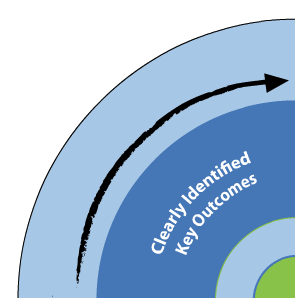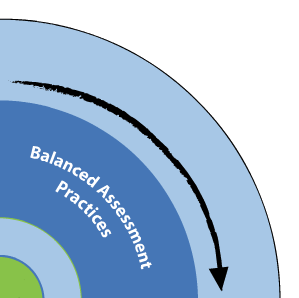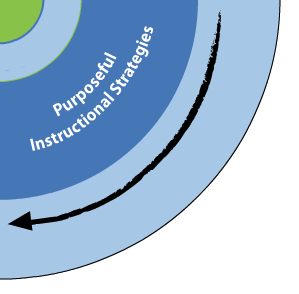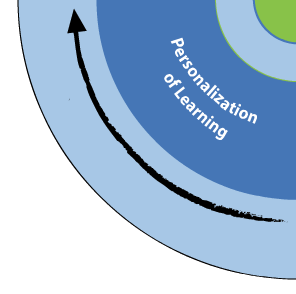Vocabulary
Page Navigation
(Click to jump to section)
| Brief Explanation | Research | Characteristics of a Skilled Reader | Clearly Identified Key Outcomes | Balanced Assessment Practices | Purposeful Instructional Strategies | Personalization of Learning |
Brief Explanation
Students cannot understand what they are reading without knowing what most of the words mean. It is critical to have a clear understanding of key vocabulary prior to reading a given text in order for a student to construct meaning from the text.
Research
- It is a complex process to truly know all levels and meanings of a word. Amongst researchers, there is a growing consensus that vocabulary instruction should focus on deeply understanding a relatively small number of words, their elements, and related words in rich contexts (e.g., Graves, 2000, 2006; Stahl & Nagy, 2006). This contrasts with the more common practice of teaching a large number of words per week from a list or workbook, a practice that results in relatively shallow knowledge that is rarely maintained for long. Teachers should choose these words carefully (Beck, McKeown, & Kucan, 2002; Graves, 2000, 2006; Stahl & Nagy, 2006), making sure they are high utility in nature. Instructional time should be spent on the deep learning of general-purpose academic words (e.g., analyze, frequent, abstract), or “Tier Two words”—those that deliver the content to the reader (Nair, 2007)— rather than targeting the low-frequency and relatively unimportant words highlighted in bold in many textbooks (Hiebert & Kamil, 2005). For students with low vocabularies, an understanding of Tier Two words is crucial to their ability to access the content-specific words that they encounter. Although this academic vocabulary is different from conversational language and essential for academic success, surprisingly, it is infrequently taught in schools.
- We should balance direct teaching of words with teaching word-learning strategies. With instruction such as using contextual cues (Fukkink & de Glopper, 1998; Swanborn & deGlopper, 1999) and using one’s morphological awareness skills (Kieffer & Lesaux, 2007; Nagy, Berninger, & Abbott, 2006), students gain the cognitive tools they need to learn a large number of words independently.
- Emphasize depth over breadth. “Instruction on a multitude of words within a lengthy text will not be as effective or rewarding as digging deeply into a short but substantive text and focusing on a thorough understanding of fewer high-utility words.” (Kelley et al., 2010)
Characteristics of a Skilled Reader
With
Increasing
Sophistication
- Know the importance of learning new words
- Understand that words can have several meanings that often vary, sometimes subtly, depending on the circumstances
- Are interested in words and enjoy using them and hearing others use them well.
- Read widely and are exposed, therefore, to new and different vocabulary and types of material.
- Learn words incrementally, through multiple exposures to them, through print and conversation.
- Have prior knowledge and experiences about the content that helps them understand how words are used in a particular context.
- Break difficult or long words into meaningful parts such as prefixes, suffixes, and roots that can help them to understand them.
- Understand how word families relate to each other (e.g., trans: transfer, translate, transform, transition).
- Demonstrate an understanding of semantic relationships between words by using graphic organizers such as semantic maps, webs, and semantic feature analysis.
- Use contextual clues to help unlock the meanings of new words.
- Use strategies to figure out an unknown word:
- Look at any prefix, suffix, or root
- Relate it to similar, known words
- Say it aloud to try and connect it to oral language
- Look it up, and paraphrase the definition
- Ask someone
- Read it in another context (e.g., on the internet, in another sentence).

Clearly Identified Key Outcomes
Use your programs of study for curriculum outcomes related to vocabulary.
Please refer to CESD’s Essential Outcomes work if you are using the previous Alberta Curriculum (Grade 7+).
Here is the New Alberta ELAL Curriculum, from the New Learn Alberta website, laid out like a scope and sequence.

Balanced Assessment Practices
- Observation – Look at student’s use of vocabulary in written contexts and and listen to student’s use of vocabulary in oral contexts

Purposeful Instructional Strategies
PRE
- Choose high-utility academic words, and take twice as long to teach those words (e.g., nine words over two weeks).
- Students often think that they know words but they do not know them deeply. (e.g. motive vs. incentive).
- Increase language in the classroom. Provide increased opportunities for students to talk rather than following the traditional practice of teacher lecture/students listen.
- Words that are chosen must build upon prior knowledge and connect to current student understanding. Provide students with opportunities prior to reading to help build background knowledge for them.
- Have students identify words that they are struggling within their reading. Have students divide words into three categories: words that they have heard and think they know the meaning of, words they have heard but are unsure of the meaning and words they have not heard and do not know the meaning of.
- Logic & Prediction: Ask students to predict words in isolation and again in context, paying attention to roots or origins of words. This is made more powerful when students discuss their predictions with others.
- “Said is dead”. Work with students to recognize the interest and specificity that can be built through the use of colourful, rich, precise vocabulary in their own writing.
- Teach students the prefixes, roots, and suffixes that appear most often in English and are constant in their meaning and pronunciation. When students know one prefix, root, or suffix, it helps unlock the meanings of other words with the same prefix, root, or suffix.
- 70% of the most frequently used words have multiple meanings. Help learners to understand this and learn to use context to help derive appropriate meanings for words.
DURING
- Looking up words in the dictionary is not effective as the definitions are inaccessible to most students, especially struggling ones. Dictionaries use brief, abbreviated phrases when students benefit most from the use of familiar language and numerous relevant examples to grasp the full meaning of a word. Instead, students need opportunities to hear and practice using the new vocabulary in many contexts, both verbally and in written form, so that they can experience shades of meaning and form a better understanding of all the ways in which the word can be used.
- Language is a social activity so students need opportunities to experience collaborative learning with their peers through structured discussions. These would include partner discussions before answering text questions, mock interviews in which students assumed characters and asked each other questions containing target words, whole-class discussions to create personal target word definitions and think-pair-shares used regularly over the course of a number of days.
- Antonyms & Synonyms: Asking students to identify words that have similar or opposite meanings and place all of the words on a continuum from “weakest” to “strongest” helps students understand the subtle nuances in word choice and may even assist them in building their writing skills. They can also be horizontal by creating a continuum line from weakest to strongest. Students can discuss where on the line the word should be placed in relation to others.
- Word Walls with pictures
- Personal picture dictionaries
- Mind maps
- Read aloud to students, stopping to “think aloud” about words that they might not know.
- National Center on Education and the Economy (2003) provides a list of things to keep in mind while working with vocabulary in the form of a “Decrease” list and an “Increase” list.
- It is suggested that teachers decrease:
- looking up definitions as a single source of knowledge
- writing sentences for new words before they have studied the word in-depth
- assuming all words need to be defined
- assuming that context clues are a reliable source for increasing comprehension
- assessing on single definitions
- It recommends that teachers increase:
- time for reading
- opportunities for students to hear and use words
- use of graphic organizers to illustrate, define, or denote
- opportunities to use words in meaningful ways through listening, speaking, and writing
- opportunities to connect new words to known concepts
- the study of concepts that encompass multiple, related words
- explicit concept construction
- use of strategies that lead to independent word learning
- finding the word or concept that will have the greatest impact on comprehension
- focus upon inference
- It is suggested that teachers decrease:
POST
- Research indicates that graphic organizers are especially effective during post-reading activities, especially when constructed by the students rather than the teacher. They facilitate higher order thinking, they serve as retrieval clues to promote learning and they are especially effective in teaching technical vocabulary.
- Students could also be encouraged to illustrate their work on the graphic organizer or to use the word in a sentence that they have created.
Resources to Support Overall Development








Personalization of Learning
- Make connections to background knowledge.
- Pre-teach vocabulary to struggling readers.
- Check in more frequently with struggling readers.